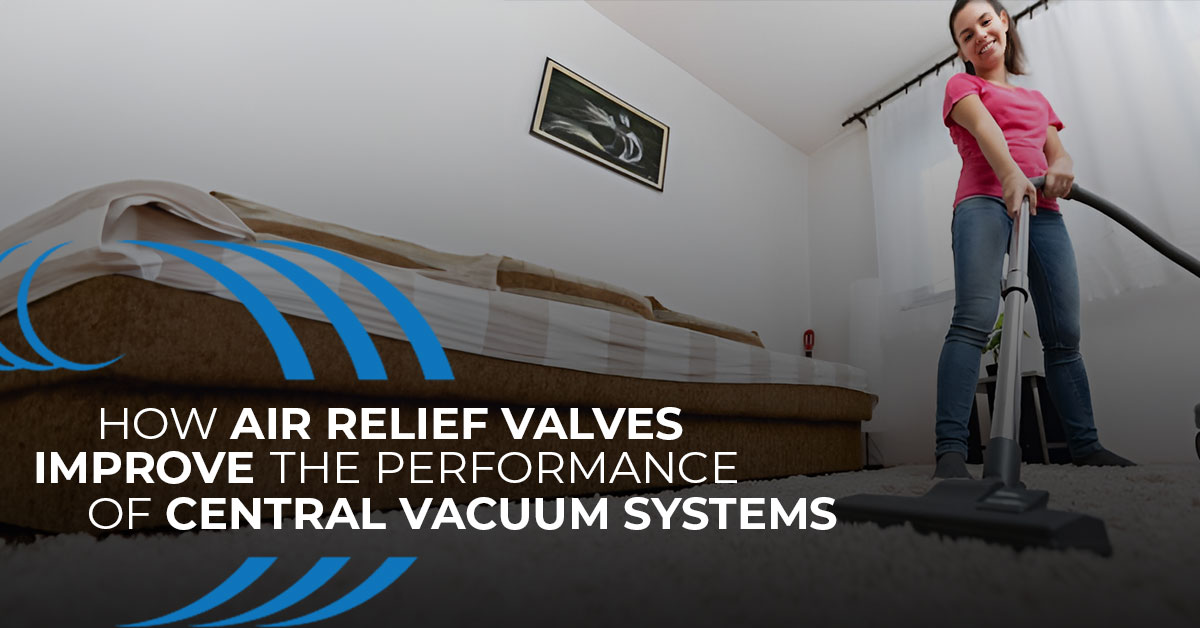
Boosting Productivity in Office Buildings with Central Vacuum
In today’s fast-paced work environment, maintaining a clean and organized office space is crucial for productivity. Office buildings often struggle with keeping their premises clean

In the realm of home cleaning appliances, central vacuum systems have carved a niche for themselves, thanks to their superior performance and convenience. One component that significantly contributes to this high performance is the air relief valve. In this comprehensive guide, we’ll explore the role of air relief valves in central vacuum systems, how they enhance performance, their impact on system efficiency, and their general role in vacuums.
Air relief valves are a critical part of central vacuum systems. They help regulate airflow within the system, releasing excess air when there is an obstruction or blockage. This release of air prevents excessive pressure build-up that could potentially damage the motor. By doing so, these valves ensure the longevity and integrity of the vacuum system, saving you from unnecessary repair or replacement costs.
The role of air relief valves in enhancing the performance of central vacuum systems cannot be overstated. These valves help maintain consistent suction power, even when the vacuum hose or cleaning tool is blocked or obstructed. This means that regardless of the challenges encountered during cleaning, your vacuum system will deliver consistent performance, thanks to the air relief valves. Your cleaning process thus becomes more efficient and less time-consuming.
The overall efficiency of a central vacuum system is largely dependent on the seamless operation of its various components, and the air relief valves are a key part of this. They contribute to the system’s efficiency by preventing potential motor damage due to excessive pressure. This not only prolongs the lifespan of the motor but also reduces energy consumption. Therefore, the air relief valves play a significant role in making your central vacuum system more energy-efficient and cost-effective.
While we’ve focused on central vacuum systems, it’s important to note that the role of air relief valves extends to vacuums in general. Whether it’s a handheld vacuum cleaner or an industrial vacuum system, the air relief valve plays a crucial role in regulating airflow and preventing damage from excessive pressure. This underlines the importance of these valves in ensuring the smooth operation and longevity of various vacuum systems.
Understanding the function and importance of air relief valves is key to optimizing central vacuum systems. Regular checks and maintenance of these valves can prevent potential issues, ensuring that your vacuum operates at peak efficiency. If these valves are neglected, the performance and lifespan of your vacuum system could be compromised. So, make sure to include the air relief valves in your regular vacuum maintenance routine.
In conclusion, air relief valves play a pivotal role in improving the performance and efficiency of central vacuum systems. They help maintain robust suction power, extend the motor’s lifespan, and optimize the overall operation of the vacuum system. As a central vacuum system owner, understanding the functionality of these valves can help you get the most out of your system and ensure its long-term efficiency. So, the next time you switch on your central vacuum system for a round of cleaning, remember the critical role that the humble air relief valve plays in its superior performance.

In today’s fast-paced work environment, maintaining a clean and organized office space is crucial for productivity. Office buildings often struggle with keeping their premises clean

Central vacuums in animal shelters & vet clinic: Explore how these systems boost hygiene, efficiency, and air quality.

In the world of home entertainment, a home theater is a luxury that many homeowners dream of. It’s an immersive experience that brings the magic

A central vacuum system is a significant investment that promises convenience, powerful suction, and improved indoor air quality. However, choosing the right central vacuum hose
Our home automation products are at the forefront of technology, offering a blend of convenience, security, and efficiency. As a Homewave dealer, you’ll be part of a network transforming homes into smart, futuristic spaces.
Embark on this rewarding journey with us and leverage the power of innovative technology.
Please fill out this form and become a Homewave Dealer.